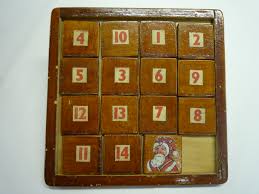Playing is Learning
History of the Sliding Puzzle
October 17th, 2016
| Ads | ||
|
Play the Challenge
|
||
|
A New Word is Coined A new Character is revealed A new Game is Afoot |
An Edutainment Adventure Based on Three Rounds of Investigations
|
|
|
Welcome to the World of PROFESsee™by seeCOSM™ PROFESsee™ is my title. I am the perpetual learner, in pursuit of knowledge, wisdom and truth. I derived my name from professor |
 |
|
|
A certain man – Samuel Loyd – who claimed to have invented the sliding puzzle spoke about how his invention “drove the world crazy”. While the authenticity of his claims has rightly been questioned, but his words about the sliding puzzle hit the nail on the head – the sweet spot of the head. It was akin to a plague – men, women, children were infected with it. Everywhere you turned in 1880, someone was attempting to solve the puzzle's variation. Its fame wasn't confined to just the United States, but to Europe as well. As a French author wrote, “There was hardly one country cottage where this spider hadn't made its nest lying in wait for a victim to flounder in its web.” So who, when and how did this craze begin? We have to go back in time to 1874 New York, to meet a postmaster called Noyes Palmer Chapman. In their book “The 15 Puzzles”, authors Jerry Slocum and Dic Sonneveld revealed Noyes as the “inventor” of the puzzle. This was contrary to popular belief as Samuel Loyd referenced above had parroted himself as the creator of the slide puzzle – a task he did for twenty years (that’s a long time and yet he couldn’t rewrite history). As a matter of fact, Mr. Chapman had applied for a patent for what he called the “Block Solitaire Puzzle” in February of 1880. His application was rejected because it looked like an already patented work – “Puzzle-Blocks" patent granted to Ernest U. Kinsey in 1878. Mr. Chapman’s first conception featured a puzzle of 16 numbered blocks arranged in four rows and each rows equaling 34. However, with improvements and tweaks here and there, the puzzle’ journey to becoming legendary begun. Mr. Chapman’s son – Frank – helped bring the improved puzzle to Syracuse, New York. From there, word of mouth and sundry connections took the game to surrounding areas including Hartford in Connecticut and Watch Hill in Rhode Islands. The presence of the American School of the Deaf in Connecticut aided the movement of the puzzles. The students of the school began making copies of the puzzle and selling them. In no time, it got to Boston, Massachusetts, where Matthias Rice, fancy woodworker made more puzzles and convinced a fancy goods dealer in 1879, to help commercialize it as “Gem Puzzle”. That’s how it became a craze in the US and Europe. It eventually found its way to other parts of the world as far as Japan in 1889. Can you Complete the sliding puzzle? Image courtesy of: https://worldwarzoogardener1939.wordpress.com/2009/12/ |
||
Latest News / Events
E-mail [email protected]
The Professee™ Newsletter Beta
http://www.seecosm.com/
http://www.seecosm.com/

